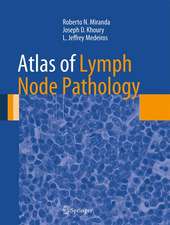Systems Biology for Signaling Networks: Systems Biology
Editat de Sangdun Choien Limba Engleză Hardback – 18 aug 2010
| Toate formatele și edițiile | Preț | Express |
|---|---|---|
| Paperback (1) | 1168.40 lei 39-44 zile | |
| Springer – 23 aug 2016 | 1168.40 lei 39-44 zile | |
| Hardback (1) | 1850.84 lei 6-8 săpt. | |
| Springer – 18 aug 2010 | 1850.84 lei 6-8 săpt. |
Preț: 1850.84 lei
Preț vechi: 2257.11 lei
-18% Nou
Puncte Express: 2776
Preț estimativ în valută:
354.18€ • 370.25$ • 299.30£
354.18€ • 370.25$ • 299.30£
Carte tipărită la comandă
Livrare economică 06-20 martie
Preluare comenzi: 021 569.72.76
Specificații
ISBN-13: 9781441957962
ISBN-10: 1441957960
Pagini: 908
Ilustrații: XVI, 908 p.
Dimensiuni: 155 x 235 x 41 mm
Greutate: 1.42 kg
Ediția:2010
Editura: Springer
Colecția Springer
Seria Systems Biology
Locul publicării:New York, NY, United States
ISBN-10: 1441957960
Pagini: 908
Ilustrații: XVI, 908 p.
Dimensiuni: 155 x 235 x 41 mm
Greutate: 1.42 kg
Ediția:2010
Editura: Springer
Colecția Springer
Seria Systems Biology
Locul publicării:New York, NY, United States
Public țintă
ResearchCuprins
Concepts.- Systems Biology Approaches: Solving New Puzzles in a Symphonic Manner.- Current Progress in Static and Dynamic Modeling of Biological Networks.- Getting Started in Biological Pathway Construction.- From Microarray to Biology.- Modeling and Reconstruction.- Computational Procedures for Model Identification.- Assembly of Logic-Based Diagrams of Biological Pathways.- Automating Mathematical Modeling of Biochemical Reaction Networks.- Strategies to Investigate Signal Transduction Pathways with Mathematical Modelling.- Inferring Transcriptional Regulatory Network.- Finding Functional Modules.- Modeling the Dynamics of Biological Networks from Time Course Data.- Decision Making in Cells.- Robustness of Neural Network Models.- Functional Modules in Protein–Protein Interaction Networks.- Mixture Model on Graphs: A Probabilistic Model for Network-Based Analysis of Proteomic Data.- Integration of Network Information for Protein Function Prediction.- Applications for Signaling Networks.- Cellular-Level Gene Regulatory Networks: Their Derivation and Properties.- Tyrosine-Phosphoproteome Dynamics.- Systems Biology of the MAPK1,2 Network.- Pathway Crosstalk Network.- Crosstalk Between Mitogen-Activated Protein Kinase and Phosphoinositide-3 Kinase Signaling Pathways in Development and Disease.- Systems-Level Analyses of the Mammalian Innate Immune Response.- Molecular Basis of Protective Anti-Inflammatory Signalling by Cyclic AMP in the Vascular Endothelium.- Construction of Cancer-Perturbed Protein–Protein Interaction Network of Apoptosis for Drug Target Discovery.- Transcriptional Changes in Alzheimer’s Disease.- Pathogenesis of Obesity-Related Chronic Liver Diseases as the Study Case for the Systems Biology.- The Evolving Transcriptome of Head and Neck SquamousCell Carcinoma.- Peptide Microarrays for a Network Analysis of Changes in Molecular Interactions in Cellular Signalling.- Tools for Systems Biology.- A Primer on Modular Mass-Action Modelling with CellML.- FERN – Stochastic Simulation and Evaluation of Reaction Networks.- Programming Biology in BlenX.- Discrete Modelling: Petri Net and Logical Approaches.- ProteoLens: A Database-Driven Visual Data Mining Tool for Network Biology.- MADNet: A Web Server for Contextual Analysis and Visualization of High-Throughput Experiments.- Erratum to: Functional Modules in Protein–Protein Interaction Networks.
Textul de pe ultima copertă
Systems biology is a new and exciting field that is an extension of many others including: Molecular Biology, Immunology, Genetics, Computational Biology, and Mathematical Biology. The goal is to understand the relationships from genes to organisms through networks in biological systems. The series Systems Biology examines an array of topics, in systems biology studies, ranging from molecular parts of cells to network modeling. The first volume in this series, Systems Biology of Signaling Networks, contains a collection of work in regulatory signaling networks and the use of large-scale omics data.
Caracteristici
Systems Biology encompasses the knowledge from diverse fields such as Molecular Biology, Immunology, Genetics, Computational Biology, Mathematical Biology, etc. Systems Biology not only to addresses key questions that are not answerable by individual fields alone, but also helps in our understanding of the complexities of biological systems. The distinctive features of this book serve as a platform to highlight the pioneering work done by scientists. Includes supplementary material: sn.pub/extras











